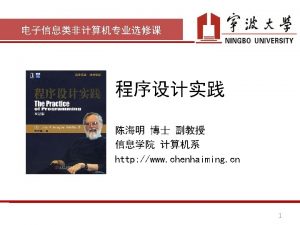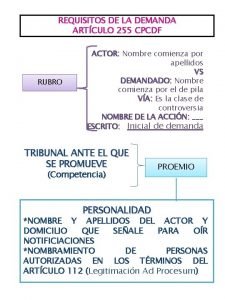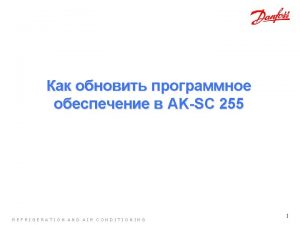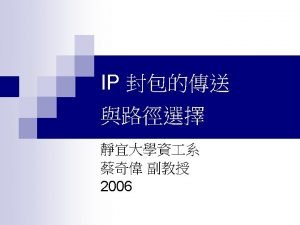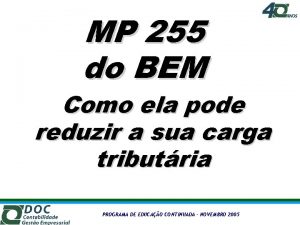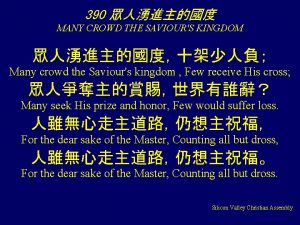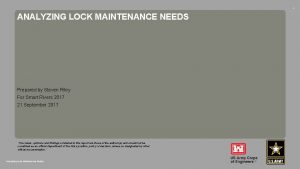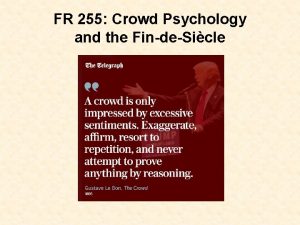The Crowd and the Screen FR 255 Week























- Slides: 23

The Crowd and the Screen FR 255: Week 8 Dr Jessica Wardhaugh

La Bellevilloise, Paris

Lecture plan • A) Overview: Mass communication and politics in Europe – How was film used to transmit political messages? • B) Close up I: Film and the crowd in France – How were the crowd/people/workers depicted on screen? • C) Close up II: Encounters with the crowd on screen – How did audiences respond?

A. Mass communication and politics • « Un nouveau régime ou plutôt un nouveau mode de rapports s’établit peu à peu et modifie notre Europe. Aucun peuple n’est plus désormais tout entier dans la seule main de ses propres chefs ou de ses propres mandataires. Par ces interviews retentissantes, par la radio, par d’autres interventions indirectes transmises par le cinéma et bientôt la télévision, les Guides ne seront plus absents nulle part. Ils pourront établir quand ils le voudront le contact et rétablir la vérité de leur personne à plaisir déformée par le pamphlet et les polémiques. De gouvernants ils deviennent entraîneurs de peuples et il se constitue une démagogie internationale. » (Gabriel Boissy, Comoedia, 1936)

Culture and legitimacy • The ‘guides’ to whom Boissy referred turned to culture (as aesthetic production and as everyday practices) to create and substantiate their legitimacy • Historical studies of ‘everyday Stalinism’ or the ‘fascination of fascism’ have explored how dictatorships both aestheticized and normalized extreme politics • State-sponsored film could offer images of the leaders and their supporters

• Cinematographers followed in the footsteps of the Red Army • Goskino, a stateowned film company, was established in 1922 • Eisenstein’s October brilliantly played out the Bolshevik interpretation of 1917 Film and Soviet Russia

Film and Fascist Italy ‘Your talking newsreel has tremendous possibilities. Let me speak through it in 20 cities in Italy once a week and I need no other power. ’ (Mussolini, speaking to the American Fox-Movietone company, 1927) Cinecittà, established in Rome in 1937, was the largest cinema complex in Europe (84 feature films produced in 1939, rising to 119 in 1942).

La Vecchia guarda (Alessandro Blasetti, 1934)


Triumph des Willens (1934) (Leni Riefenstahl)

Siegfried Kracauer, From Caligari to Hitler: A Psychological History of the German Film (1947) • ‘What films reflect are not so much explicit credos as psychological dispositions — those deep layers of collective mentality which extend more or less below the dimension of consciousness. ’

Film in Nazi Germany • Reich film legislation in 1934 gave extended powers to the censor and exiled Jews from the film industry • Youth film evenings or Jugendfilmstuden were organized on a weekly basis by the Hitler Youth, with a network of 1, 500 mobile film units • From 1936, attendance was compulsory

B. Close up: Film and the Crowd in France • ‘Le cinéma matérialise le pire idéal populaire. Il ne s’agit pas de la fin du monde, mais de la fin de la civilisation. ’ (Anatole France) • ‘Pour la première foi depuis les cathédrales et les chansons de geste, nous trouvons en présence d’un art vraiment populaire. ’ (André Maurois)

‘Social’ cinema in France • L’Atalante (Jean Vigo, 1934) portrayed the life of a young working-class couple • Workers were also a key focus in Jean Renoir’s La Petite marchande d’allumettes (1928) and René Clair’s A Nous la liberté (1931) • Jean Duvivier’s La Belle Equipe (1937) showed a group of workers winning the lottery and running a café together • Marcel Carné’s Le Jour se lève (1939) offered a darker portrait, with Jean Gabin as tragic proletarian hero

Film and politics in France • Pre-World War I, French anarchists had established a cooperative called the Cinéma du Peuple • Jean Renoir worked with the Communist Party (PCF) to produce the electoral propaganda film La Vie est à nous (1936) • Amateur film-makers in the Socialist Party (SFIO) such as Marceau Pivert and Germaine Dulac filmed party events

Jean Renoir, La Marseillaise (1938)

Theatre/film critic Marcel Lapierre on La Vie est à nous (Le Peuple, 17 April 1936) • ‘C’est la première fois, en France qu’un parti politique fait réaliser un grand film de propagande et c’est également la première fois que, dans notre pays, une oeuvre cinématographique est produite en dehors des formes capitalistes et commercialistes habituelles, “par un groupe de techniciens, d’artistes et d’ouvriers. ” A ce double titre, La Vie est à nous apporte donc du nouveau dans le cinéma français. ’

• Jean Renoir described La Marseillaise in his autobiography as a ‘celebration of the French people’ • Proud of their regional identities, these ‘people’ are also depicted as more patriotic than the aristocrats in Coblentz La Marseillaise (1938)

A national film… — La nation… les citoyens… qu’est-ce que tout ça? —La nation, c’est la réunion fraternelle de tous les Français. C’est vous. C’est moi.

…and a ‘popular’ film • ‘Ce film, que Jean Renoir, sur l’initiative du Rassemblement Populaire et avec le concours du gouvernement et de la CGT, tourne ne sera pas un film populaire seulement à cause de son thème ; toute la production va être fait avec la collaboration des masses du peuple français. Même le financement va être effectué par les masses. ’ (Guide à l’Exposition Internationale, Paris, 1937)

C. Close up: encounters with the crowd on screen • The popular reception of crowds on screen can be very difficult to trace • Yet the French police did report on the reactions of cinema audiences, e. g. to newsreels depicting controversial leaders or demonstrations • Such newsreels did not always feature audio recordings of the leaders’ speeches, however

Maurice Bardèche and Robert Brasillach, Histoire du cinéma, 1946 Contempler une émeute ou un dictateur passe encore: les entendre, cela devient dangereux. On assista à ce spectacle inconcevable que, tandis que l’univers était secoué des plus certaines catastrophes, l’écran ne nous présentait que d’anodins matches de boxe ou de tennis, le tour de France ou d’Italie, la culture de la vigne en Californie, la moisson au Danemark, les fêtes régionales dans le monde entier, des concours de beauté sur toutes les plages, des concours de chiens sur tous les trottoirs,

Private film evenings • Organized by political groups and parties across the spectrum, these offered opportunities to view political films in partisan settings • Action Française militants watched films about the Orleanist pretender, such as La Croisière de Campana or Le Sentiment populaire en monarchie • The Croix de Feu/Parti Social Français filmed its mass meetings and leisure activities • Communist film evenings featured films from
 255, 255, 255
255, 255, 255 Screen small screen offscreen
Screen small screen offscreen Week by week plans for documenting children's development
Week by week plans for documenting children's development Bias through source control
Bias through source control Bias by photos captions and camera angles
Bias by photos captions and camera angles Bias through selection and omission
Bias through selection and omission Char 127
Char 127 Requisitos de la demanda art 255
Requisitos de la demanda art 255 Ece 255 purdue
Ece 255 purdue Ak-sc 255
Ak-sc 255 Welcome lodge 255
Welcome lodge 255 Hop255
Hop255 14-bit
14-bit Sp 255
Sp 255 Bakara süresi 255 ayet
Bakara süresi 255 ayet 255 characters
255 characters Mp 255
Mp 255 Alcatel 255
Alcatel 255 255-237
255-237 Repetition propaganda meaning
Repetition propaganda meaning Sociometric
Sociometric Conventional crowd
Conventional crowd Dispersed collective behavior
Dispersed collective behavior Many crowd the savior's kingdom
Many crowd the savior's kingdom






